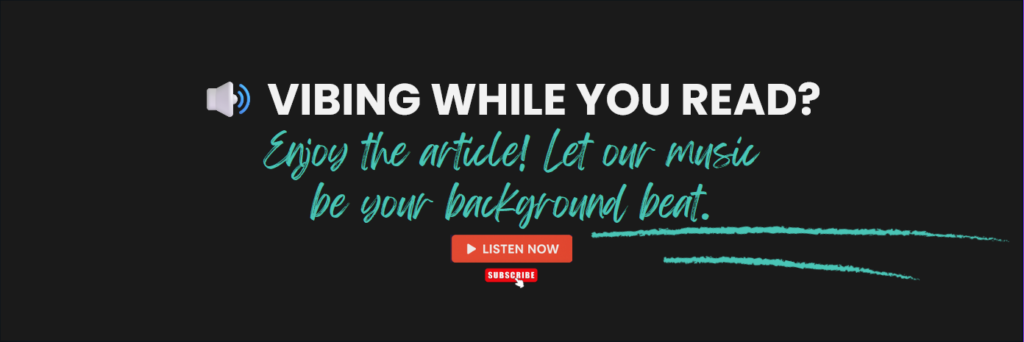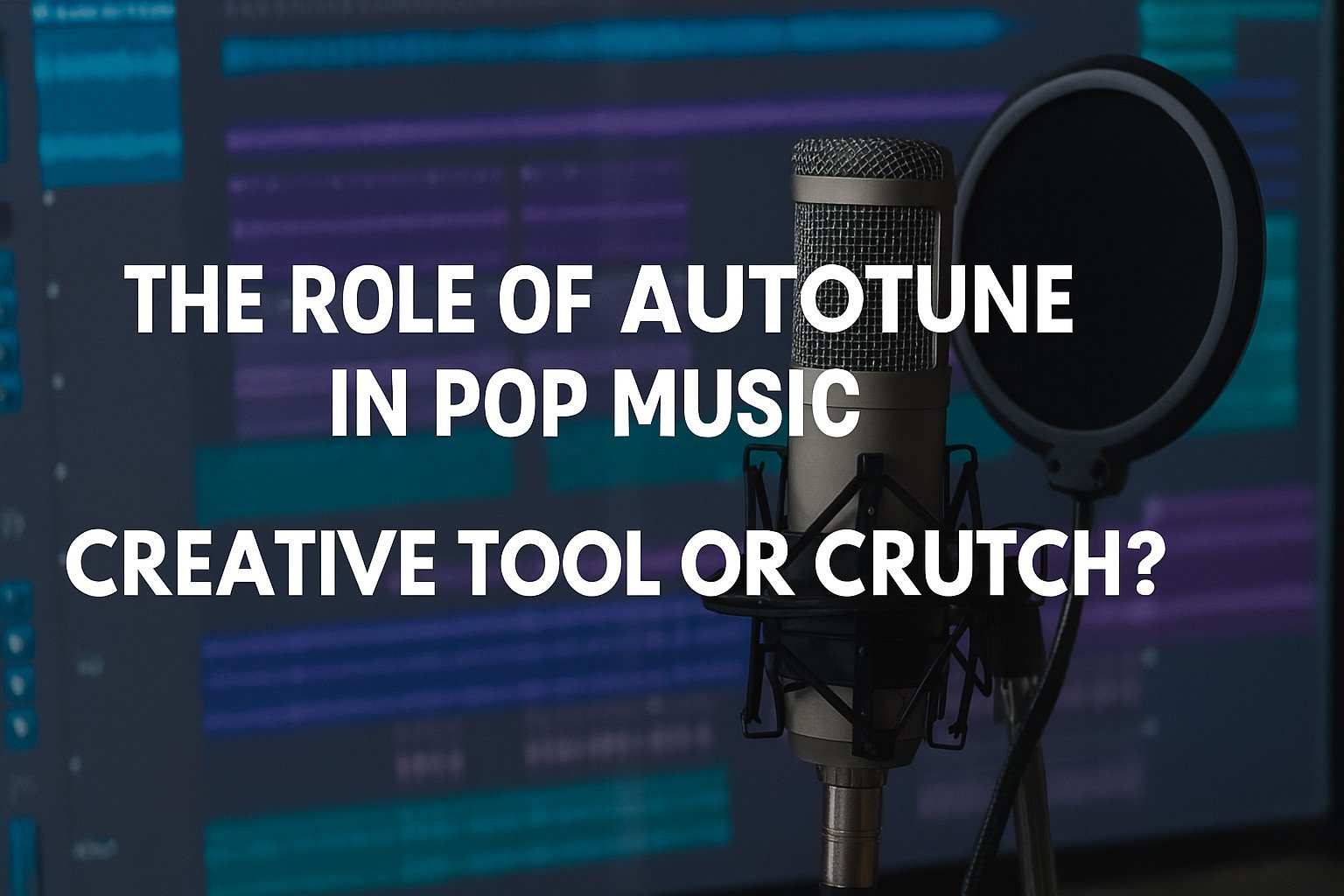
Autotune. Just saying the word sparks a debate among music fans, artists, and critics alike. Some see it as a revolutionary tool that has reshaped the sound of modern pop, while others argue it’s a crutch that robs music of its authenticity. Whether you’re jamming out to a Top 40 hit or scrolling through TikTok, chances are you’ve heard the unmistakable sound of autotune. But is it really enhancing creativity, or is it turning artists into robots? Let’s dive deep into autotune’s role in pop music and uncover whether it’s a creative tool or a crutch for today’s artists.
What is Autotune?
Before we get into the juicy stuff, let’s break down what autotune actually is. Originally developed by Antares Audio Technologies in 1997, autotune is software designed to correct pitch imperfections in vocal recordings. In simple terms, it’s used to fix off-key notes, making a singer’s voice sound perfectly in tune. Autotune can be applied subtly, just to clean up minor pitch issues, or it can be cranked up for that robotic, otherworldly effect that has come to define certain styles of music, especially in pop and hip-hop.
Think of Cher’s iconic 1998 hit “Believe.” That futuristic, robotic vocal effect? Yep, that was autotune—and it was one of the first major examples of its use in a pop song. Since then, autotune has spread like wildfire, becoming a staple in modern music production.
The Creative Revolution: How Autotune Shaped Pop Music
Pushing Boundaries with Sound
Autotune isn’t just about fixing vocal flaws; it’s about creating new sounds. Artists like Kanye West, Travis Scott, and T-Pain have used autotune as a creative effect, bending and manipulating their voices in ways that weren’t possible before. In Kanye’s 808s & Heartbreak or T-Pain’s countless hits, autotune isn’t just a production trick—it’s a key element of their artistic identity.
T-Pain, for example, became synonymous with the autotune sound in the mid-2000s. His tracks like “Buy U a Drank” and “I’m Sprung” featured heavily autotuned vocals, which gave his music a distinct futuristic vibe. At first, T-Pain was criticized for relying too much on the effect, but over time, he turned the criticism on its head. His bold use of autotune became his signature, proving that, when used creatively, autotune can be an artistic tool, not just a fix for vocal imperfections.
Changing the Vocal Landscape
Autotune has also changed the way we think about vocal performance. In the past, being a “great singer” meant hitting all the right notes with near-perfect pitch. But today, autotune has broadened the definition of what a great vocal performance can be. With the rise of autotune, artists don’t need a flawless voice to create a compelling track. Instead, they can use autotune to experiment with vocal textures and styles, turning their voice into an instrument that transcends traditional singing.
Artists like Billie Eilish and Post Malone use autotune as a subtle enhancement, blending it with their natural vocal abilities to create unique, haunting soundscapes. Rather than detracting from their talent, autotune adds an extra layer of depth to their performances, enabling them to push creative boundaries and stand out in a crowded music landscape.
Is Autotune a Crutch?
Of course, not everyone is a fan of autotune. Critics argue that it takes away from the raw, emotional quality of a singer’s voice, and some even see it as a crutch for artists who can’t sing well. This criticism often pops up when discussing pop stars who rely heavily on autotune in live performances, leading fans to question whether they’re truly talented vocalists or simply riding on the back of technology.
A prime example of this debate came in 2009, when Jay-Z released D.O.A. (Death of Autotune). In the song, he criticizes the overuse of autotune in hip-hop and pop, calling for a return to more “authentic” music. While Jay-Z’s track made waves and started conversations, autotune didn’t die—it evolved. Many artists responded by continuing to experiment with it in new, innovative ways.
So, is autotune a crutch? For some artists, maybe. There’s no denying that autotune can mask poor vocal technique, allowing singers with less-than-stellar voices to sound polished and radio-ready. But for many artists, it’s a creative tool that enhances their artistry and allows them to craft unique, forward-thinking sounds.
The Authenticity Debate
The question of authenticity is one that haunts the autotune debate. Is music that’s heavily processed and altered still “real” music? Some critics argue that using autotune cheapens the art form, stripping away the vulnerability and emotional resonance that come from an unaltered human voice. They believe that music should be raw, real, and imperfect, reflecting the genuine emotion of the artist.
But here’s the thing: every era of music has been shaped by the technology of its time. From electric guitars and synthesizers to drum machines and sampling, musicians have always used the latest tools to push the boundaries of what’s possible. Autotune is no different. It’s simply the latest evolution in a long line of technological innovations that have shaped the sound of popular music.
Just as the electric guitar revolutionized rock music in the 1960s, autotune has revolutionized pop music in the 21st century. It’s not about being “real” or “fake”; it’s about creating art that resonates with listeners and pushes the genre forward.
Autotune in Live Performances
One area where autotune continues to stir controversy is in live performances. While it’s one thing to use autotune in a studio, where you have full control over the production, it’s another thing entirely to use it live on stage. For some music fans, using autotune in a live performance feels like cheating—it takes away from the authenticity of the moment and the skill of live singing.
However, live autotune is becoming more common, especially in pop and hip-hop performances. Artists like Travis Scott, Lil Uzi Vert, and even Madonna have used live autotune to enhance their vocal performances during concerts. For these artists, live autotune isn’t about masking flaws; it’s about delivering a polished, futuristic sound that matches the highly produced nature of their music.
At the end of the day, live autotune is just another tool in the performer’s arsenal. Like lighting effects, backing tracks, or elaborate stage designs, it’s used to create a specific experience for the audience. Whether that experience feels authentic or not is ultimately up to the listener.
The Future of Autotune in Pop Music
So, where does autotune go from here? While some may argue that it’s overused or played out, the reality is that autotune is still evolving. As music technology continues to advance, autotune will likely become even more integrated into the creative process, giving artists new ways to manipulate their vocals and push the boundaries of sound.
We’re already seeing new forms of vocal processing, like Melodyne and VocalSynth, which offer even more control over pitch, tone, and vocal texture. These tools build on the foundation that autotune laid, enabling artists to create even more complex and innovative vocal effects.
Moreover, with the rise of artificial intelligence (AI) in music production, we may soon see autotune evolve into something even more sophisticated. AI-driven vocal processors could analyze an artist’s voice in real-time, automatically adjusting pitch, tone, and effects to create a seamless vocal performance that feels both natural and futuristic.
Conclusion: Creative Tool or Crutch?
So, is autotune a creative tool or a crutch? The answer is both—and neither. It all depends on how it’s used. For some artists, autotune is a vital part of their creative process, allowing them to experiment with new sounds and push the boundaries of their music. For others, it’s simply a tool to fix imperfections or enhance their vocals in a polished way.
In the end, autotune is just that: a tool. Like any tool, it can be used creatively, or it can be overused and relied on too heavily. The real question isn’t whether autotune is good or bad—it’s whether artists are using it in a way that serves their music and enhances their artistic vision.
As the music industry continues to evolve, so will autotune. And whether you love it or hate it, there’s no denying that it has had a profound impact on the sound of modern pop music. Whether it’s a creative tool or a crutch is ultimately up to the artist—and, of course, the listener.


